In This Issue
Message From the
Executive Director
Advocacy Update
Together We MADE a Difference!
 Now Visit VSI Now Visit VSI
on Facebook
 And Twitter And Twitter
Esteemed Vitiligo Physician
Announces Retirement
Camp Discovery 2014!
Phenols vs Polyphenols:
Which are Good for You
and Which Are Not
What's On Your Mind?
- Can "herbal" hair color
ingredients cause pigment loss?
- What phenols are found
in everyday products?
Medical News Updates
- 2013 - State of Vitiligo Research
Research & Clinical Trials
Bibliography
Earn funding for VSI
When you Shop!
View Past Newsletters
VSI Medical and Scientific
Advisory Committee
Pearl E. Grimes, M.D., Committee Chair
Ted A. Grossbart, Ph.D.
Sancy A. Leachman, M.D.
I. Caroline Le Poole Ph.D.
Mauro Picardo, M.D.
Nanette B. Silverberg, M.D.
Richard A. Spritz, M.D.
Alain Taieb, M.D., Ph.D.
Wiete Westerhof, MD, Ph.D.
For more information
on VSI's MSAC Click Here |
| |
| |
How to Log In:
Have you have forgotten your Login ID and/or Password?
No Problem!
Just go to the
Community Page
Scroll down to
the login box.
LOOK UNDERNEATH!
You'll see instructions to have them sent to the email address on your account.
|
|
How to Log In:
Have you have forgotten your Login ID and/or Password?
No Problem!
Just go to the
Community Page
Scroll down to
the login box.
LOOK UNDERNEATH!
You'll see instructions to have them sent to the email address on your account.
|
|
| |
How to Log In:
Have you have forgotten your Login ID and/or Password?
No Problem!
Just go to the
Community Page
Scroll down to
the login box.
LOOK UNDERNEATH!
You'll see instructions to have them sent to the email address on your account.
|
|
| |
| Contact Us
Online
VitiligoSupport.org
Email Contact Us
Postal Mail Address
Vitiligo Support International
P.O. Box 3565
Lynchburg Va 24503
Phone
(434) 326-5380 |
|
Message From the Executive Director

Dear Members and Friends of VSI,
2013 has been a great year for the vitiligo community. Thanks to the financial support of our sponsors and members, VSI's national and international outreach expanded at a record pace, allowing us to provide critically important patient representation at national level meetings, attended by a worldwide representation of scientists and physicians.
In 2013, VSI held discussions with scientists from America, Australia, Belgium, Canada, Egypt, France, India, Italy, Saudi Arabia, the UK, and the Netherlands. Dialogue at this level serves two purposes. First, by representing the patient, we are able to enlighten scientists on the patient experience and point of view. Second, we glean and report back to you cutting edge information, such as the many new treatments in the pipeline (see VSI's Summer Newsletter) and potential new therapeutic approaches based on findings from current research efforts. VSI also announced a record number of recruiting clinical trials, connecting thousands of patients worldwide with scientific studies for potential treatments and procedures.
While VSI began many years ago as a grassroots level web forum, we have now expanded far beyond those roots. Our many partnerships, both national and international, combined with 2013 website statistics showing nearly 450,000 visitors from over 200 countries, averaging over 1100 UNIQUE visitors each day, proves that we are now the major voice for those affected by vitiligo.
VSI has grown at an unprecedented pace over the past 2 years, but is now at a crossroads, unable to continue at this level without a major funding increase.
Please, we need YOU to work together with us for a brighter future for all
vitiligo patients!
Sincerely,

Jackie Gardner
Executive Director
Please Join VSI in a Commitment to a Better Future
|
Together, we are the future of vitiligo!
Become a Supporting Member: Click Here
Make a General Donation Through VSI: Click Here
Make a General Donation with PayPal

|

| This organization is a Silver-level GuideStar Exchange
participant, demonstrating its commitment to transparency. |
|
Dr. Stephen Katz, M.D., Ph.D.,
Director of NIAMS
and VSI Director Jackie Gardner
during the National Institute of Arthritis and Musculoskeletal and Skin Diseases
(NIAMS) Coalition meeting in Bethesda, MD on Nov. 6, 2013.
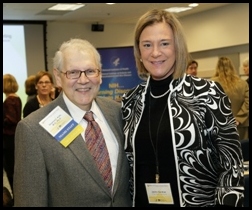
NIAMS, the NIH institute that funds vitiligo research,
invested 3.5 million dollars in
vitiligo-related research in 2013 alone!
The financial support of VSI members allows us to attend meetings like this that
are critical to maintaining key relationships, staying on top of the latest research
advances, and learning of new research funding opportunities.
|

Advocacy - Fall 2013
Together We Made a Difference!
You may recall that in our Fall 2013 newsletter, VSI reported on the campaign we launched in an effort to hold off proposed cuts of 50% to 60% to physician phototherapy reimbursement proposed by the Centers for Medicare and Medicare Services (CMS). Had those cuts been implemented, many physicians would have been forced to discontinue offering phototherapy, further reducing the already inadequate availability of this treatment.
I am proud to report that hundreds of vitiligo patients responded to our appeal, and our collaborative efforts persuaded CMS not to carry through with its plan. In early December, the agency released the final data used to calculate next year's rates, which resulted in only a 9% cut.
CMS indicated that it was due to the "many thoughtful and detailed technical comments" that it did not adopt the steep cuts to reimbursement rates originally proposed. However, CMS continues to believe the payment rates are too high, and continues to explore options for future cuts, so the fight for phototherapy access is not over.
We at VSI will be diligent in our efforts to make sure that phototherapy remains a treatment option for all vitiligo patients. We hope that when the time comes, you will again speak up and let CMS know the importance of access to this valuable treatment option.
Again, we thank you for taking action on this important campaign! Our success demonstrates the power of our collective voice. We must continue working together to improve our future!

Esteemed Vitiligo Physician
Announces Retirement
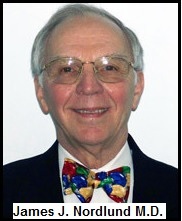
Vitiligo Support International would like to take this opportunity to recognize Dr. James J. Nordlund, not only for his outstanding contribution to the field of dermatology, but also for his principles, standards, and core belief in the Hippocratic Oath that he took 40+ years ago.

The Simplicity of Excellence
That which separates a good doctor from a great doctor is far more than talent or knowledge, and does not come from a book. Dr. Nordlund's contributions as a practitioner, scientist, educator and mentor speak for themselves. However, it is his character, ethics, and compassion that will forever mark his legacy with excellence.
Many years ago, after losing all hope of finding a local dermatologist knowledgeable about stabilizing rapidly
spreading vitiligo, my journey took me 8 hours away
to see this gentlemanly physician.
Worn down from being treated as though my ongoing loss of pigment was unimportant, and having my feelings dismissed as overreaction, I arrived in a somewhat emotionally fragile state.
Not only was Dr. Nordlund willing to write a treatment protocol for me to take back to my local dermatologist, but he was truly the first doctor to validate my feelings. His manner was very matter-of-fact, yet very reassuring. I came away with a renewed sense of optimism. I knew there would be more hurdles down the road, but I never lost the hope that was instilled in me that day.
~ Thank you Dr. Nordlund ~
Jackie Gardner |
VSI recently asked Dr. Nordlund, Clinical Professor, Department of Dermatology, Wright State University Boonshoft School of Medicine, a few questions about his career relating to vitiligo, his plans for the next stage of his life, and the possibilities for what lies ahead for vitiligo care and research. As you read on, you will have a greater understanding of just what it takes to make a great doctor.
Q. What year did you begin your dermatology career?
A. I started my residency in dermatology in 1970 at Yale and joined the faculty in 1972.
Q. What do you see as your greatest achievement/s?
A. Science - I, along with many others (Dr. Lerner especially), made the study of vitiligo and pigmentation an international effort that was considered to be important and we trained many students, dermatologists, and scientists, to continue these studies the world over.
Teaching - I have been involved in the training of over 100 dermatologists some of great note - Dr. Boris Lushniak currently is acting surgeon general of the U.S., and Dr. Louise Barnes, a Fellow of the Royal College of Physicians of Ireland, in Dublin, Ireland. We have trained not only many successful derms around the world, but also those with PhD’s and other degrees from 20-some countries.
Clinically - I think I have helped a great many patients with skin disorders - at least that is what they tell me as I move toward retirement.
Q. What sparked your interest in vitiligo?
A. One night while I was on call at the hospital, I went to have dinner and Dr. Lerner was just starting his meal. We sat down and began to chat. He noted that vitiligo was a disorder that killed benign melanocytes. He asked the question, could we find that mechanism and use that to kill malignant melanocytes, i.e., melanoma? Well we never accomplished that, but we did try very hard.
Q. What was the top treatment for vitiligo when you first began
treating vitiligo patients?
A. We used PUVA (psoralen plus UVA). It worked well, but as you know it is considered a carcinogen, causing melanoma and non-melanoma skin cancers.
Q. How do you feel about the scientific progress that's been made during your tenure, with regard to improved treatments and/or discoveries that might lead to better treatments?
A. There has been lots of progress, including identification of some of the genes that underlie vitiligo, some of the mechanisms whereby vitiligo might be caused (i.e., Caroline LePoole’s work on heat shock proteins), and a search for a medication that would halt the progress of vitiligo. We have not found that yet.
Q. What is your perspective on the possibility of science revealing a pathway in the next 5 years that could result in a treatment that would turn off the immune response that causes vitiligo?
A. I think the chances are reasonable, but biology is complicated. Hard to predict, but certainly possible.
Q. What are your plans for the future?
A. I will continue to teach. I am taking courses (OLLI courses at our university) on literature, opera, history, and other topics with my wife and will continue to find other like topics. I am a docent at our art museum and I will expand those activities. And we will visit some more exotic places in the world. I am looking for some other volunteer activities.
Q. If you had one piece of advice to share with
dermatologists new to vitiligo patients, what would it be?
A. Dermatologists, all physicians, should bring hope and encouragement. We can’t solve every problem. But we can find out what is available, we can consult colleagues, we can search the literature. And then tell the patient that you will do everything in your power to find some type of solution. To dismiss them fails to fulfill the Hippocratic oath we all are supposed to take.
So new dermatologists should learn about what is available; if they have a deficiency in knowledge, and we all do, they can take one or several of the many courses on skin disease offered at the national meetings.
The patient needs to know you are interested, you are concerned, and you will do your very best to help. No one expects (although we would all love to have) a miracle, just work hard at the problem. It is where we get real satisfaction from practicing medicine. People really appreciate the extra effort to solve a problem. |
Q. What will you miss the most after retirement?
A. I will miss the patients. I really enjoyed the patient care….
Dr. Nordlund, you will indeed be missed.
We wish you the very best in your retirement!

To read more about Dr. Nordlund's professional career, click here.


Camp Discovery 2014
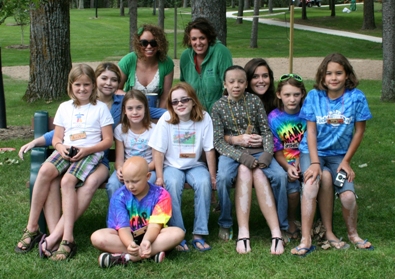
The American Academy of Dermatology’s (AAD) Camp Discovery program is for children ages 8-16 who have a chronic skin disease.
Under the expert care of dermatologists and nurses, Camp Discovery gives campers the opportunity to spend a week with other young people with skin conditions having fun and participating in activities such as swimming, horseback riding, arts and crafts and many more.
There is no fee to attend, all costs, including transportation, are provided by the AAD through generous donations from its members, outside organizations and individuals. All campers must be initially referred by their dermatologist.
This year the Academy is proud to offer six camping sessions:
- June 22 – 27, Camp Little Pine in Crosslake, Minnesota (ages 10 – 14)
- June 23 – 27, Camp Reflection in Carnation, Washington (ages 8 – 16)
- July 6 – 11, Camp Big Trout in Crosslake, Minnesota (ages 14 – 16)
- August 10 – 15, Camp Dermadillo, Burton, Texas (ages 9 – 15)
- August 9 – 15, Camp Horizon, Millville, Pennsylvania (ages 8 – 13)
- August 10 - 16, Camp Liberty, Connecticut (ages 8-16), change in venue
For more information about attending, volunteering or donating, please visit www.campdiscovery.org or contact Janine Mueller at [email protected].
To read a firsthand report from one of our members
who attended Camp Discovery, click here. |

Phenols vs Polyphenols:
Which are Good for You and Which are Not
Phenols are in you and around you. They are in the apples you eat, the dye you use for your hair, the cosmetics you use on your skin, and a myriad of other everyday products. They can help you live longer. They can also make you sick.
If you have vitiligo, they may have helped to trigger onset of the disease. If you are trying to repigment your skin, they may be able to help. Understanding which phenols to avoid and which may be helpful can be important to effectively controlling this skin disease.
What is a phenol?
  Phenols are common in the natural world, especially in plants. They number in the thousands, differing in chemical structure and function. Some of us can be exposed to them as industrial additives in laboratory processes or through the processing of chemicals, wood, and plastics. Many of us will come into contact with phenols through our use of everyday items such as hair dyes, photography chemicals, and household stain removers. Phenols are common in the natural world, especially in plants. They number in the thousands, differing in chemical structure and function. Some of us can be exposed to them as industrial additives in laboratory processes or through the processing of chemicals, wood, and plastics. Many of us will come into contact with phenols through our use of everyday items such as hair dyes, photography chemicals, and household stain removers.
Are people with vitiligo more vulnerable to the effects of phenols?
People with vitiligo whose skin comes into contact with industrial or commercial phenolic compounds can develop what is termed “occupational vitiligo." Being
aware of this potential trigger can help to minimize your risk of worsening your vitiligo.
To view a list of the various industrial chemicals and substances that may
trigger the onset or spreading of vitiligo,
click here.
Polyphenols, a type of phenol compound primarily found in food, are currently being studied for their ability to facilitate repigmentation of the skin.   Polyphenols are found, for example, in fruits such as apples, blackberries, blueberries, cantaloupe, cherries, cranberries, grapes, pears, plums, raspberries and strawberries, and vegetables such as broccoli, cabbage, celery, onion and parsley are rich in polyphenols. Red wine, chocolate, green tea, olive oil, bee pollen, honey and many grains are sources as well. Polyphenols are found, for example, in fruits such as apples, blackberries, blueberries, cantaloupe, cherries, cranberries, grapes, pears, plums, raspberries and strawberries, and vegetables such as broccoli, cabbage, celery, onion and parsley are rich in polyphenols. Red wine, chocolate, green tea, olive oil, bee pollen, honey and many grains are sources as well.
Are phenols of value in treating vitiligo?
As mentioned above, research is now looking more closely into the potential benefit of the type of phenol called polyphenols. A published 2008 scientific review of clinical trials testing natural health product treatments for vitiligo concluded that most published studies concerning these products were flawed. However, according to a 2010 dermatological scientific review of clinical trials using plants in skin disease treatment, three polyphenol plant studies offer promising leads.
  One such polyphenol-containing plant, the fern Polypodium leucotomos, has been reported to enhance the rate of repigmentation in vitiligo patients. A 2007 European study found One such polyphenol-containing plant, the fern Polypodium leucotomos, has been reported to enhance the rate of repigmentation in vitiligo patients. A 2007 European study found 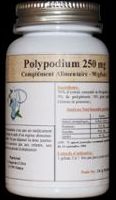 that oral extracts of this antioxidant fern enhanced the effectiveness of narrow band ultraviolet B light (NB-UVB) in treating vitiligo. Fifty patients with generalized vitiligo randomly received 250 mg of oral P. leucotomos or placebo three times daily, combined with NB-UVB twice weekly for 25-28 weeks. Patients in the P. leucotomos group showed increased repigmentation in the head and neck area (50%) versus the placebo group (19%). The study’s authors said this increased repigmentation effect may be more pronounced in light skin types (skin types 2 and 3). that oral extracts of this antioxidant fern enhanced the effectiveness of narrow band ultraviolet B light (NB-UVB) in treating vitiligo. Fifty patients with generalized vitiligo randomly received 250 mg of oral P. leucotomos or placebo three times daily, combined with NB-UVB twice weekly for 25-28 weeks. Patients in the P. leucotomos group showed increased repigmentation in the head and neck area (50%) versus the placebo group (19%). The study’s authors said this increased repigmentation effect may be more pronounced in light skin types (skin types 2 and 3).

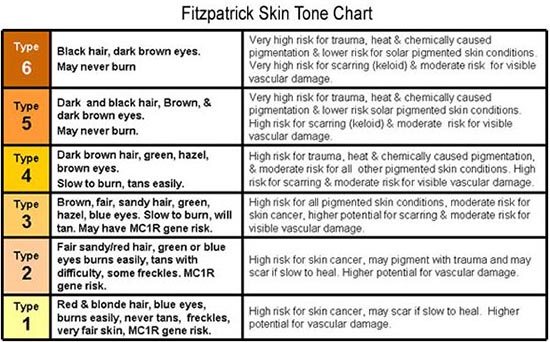
Another study in 2003 reported repigmentation in patients taking ginkgo biloba, a polyphenol commonly used in Chinese medicine. Oral administration of an extract of ginkgo biloba 40 mg three times daily over a 6-month period was effective in a double-blind, placebo-controlled trial in 52 patients with limited, slowly spreading vitiligo. Ginkgo biloba significantly reduced the active progression, and 10 of 38 patients in the ginkgo group, compared with 2 of 22 patients in the placebo group, showed marked to complete repigmentation.
Another traditional Chinese medicine mixture (called xiaobai mixture) composed of 30 g of walnut, 10 g of red flowers, 30 g of black sesame, 30 g of black beans, 10 g Zhi Bei Fu Ping (duckweed), 10 g of Lu Lu Tong (sweetgum fruit, Liquidambaris fructus) and 5 plums was given to 74 vitiligo patients over a three-month period once daily and compared to a group treated with PUVA. The authors of this 2003 study reported that the xiaobai mixture group experienced a greater therapeutic effect than the PUVA group.
Why are people with vitiligo susceptible to phenols?
Science suggests that melanocytes in those with vitiligo are genetically fragile and unable to tolerate or appropriately respond to oxidative stress. Phenolic compounds are believed to trigger or worsen vitiligo by killing the melanocytes in the skin through oxidative stress and causing an overload of hydrogen peroxide in the skin. Interestingly, it seems that the melanocytes of those not genetically predisposed to vitiligo are unaffected by these compounds.
Materials containing phenolic/catecholic derivatives
Germicidal detergents
Rubber antioxidants
Varnish and lacquer resins
Motor oil additives
Synthetic oils
Deodorants
Duplicating paper
Formaldehyde resins
Soap antioxidants
Latex gloves
De-emulsifiers for oil field use
Plasticizers
Insecticides
Printing Inks
Valve plants
Disinfectants
Paints
Photographic chemicals
Adhesives |
Oxidative stress is an over-accumulation of reactive oxidants, also known as reactive oxygen species (ROS). ROS are made up of many different radicals, or organic molecules, which support a variety of biological processes. When they become unstable (free radicals) or in excess, tissue or cellular damage may occur. The purpose of these ROS (or radicals) during the inflammatory process is to kill or destroy invading microorganisms and/or to degrade damaged tissue structures. A low level of ROS routinely circulates in our bodies. Uncontrolled release of ROS is involved in the pathogenesis of a number of human skin disorders, including vitiligo.
Natural antioxidants in our bodies are believed to work by eliminating or minimizing the deleterious effects of oxidative stress. Scientists believe that an optimal balance must exist between ROS and antioxidants to promote good health.
Polyphenols are a type of antioxidant. Other types of antioxidants are also being tested in treating vitiligo, including those found naturally in the skin, such as glutathione (GSH), alpha-tocopherol or vitamin E, ascorbic acid or vitamin C, glutathione peroxidases, glutathione reductase, glutathione S-transferases GSTs), superoxide dismutases (SODs), catalase, and quinine reductase. The efficacy of these antioxidants, alone or in combination with phototherapy, have been reported with mixed or negative results. Some recent studies, however, are worth noting and may provide leads to further research.
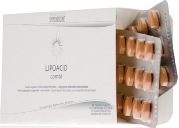  A 2007 double-blind, placebo-controlled trial testing these candidate natural antioxidants provides the first definitive evidence of the effectiveness of antioxidants in treating vitiligo, according to the study’s authors. In this trial, the 28 patients who completed the study were given daily antioxidant supplementation referred to as an antioxidant pool (AP). This product, a commercially available drug in Europe (Lipoacid-combi), contains alpha-lipoic acid (50Mg), vitamin C (50mg), vitamin E (20 mg), polyunsaturated fatty acids (12%), and cysteine monohydrate (50 mg). The patients were given the antioxidant product in the form of two tablets daily for two months prior to beginning NB-UVB therapy. The supplementation regimen continued during six months of twice-weekly NB-UVB. The antioxidants were found to increase the therapeutic efficacy of the NB-UVB phototherapy, with 47% of the patients obtaining over 75% repigmentation versus 18% in the placebo group. A 2007 double-blind, placebo-controlled trial testing these candidate natural antioxidants provides the first definitive evidence of the effectiveness of antioxidants in treating vitiligo, according to the study’s authors. In this trial, the 28 patients who completed the study were given daily antioxidant supplementation referred to as an antioxidant pool (AP). This product, a commercially available drug in Europe (Lipoacid-combi), contains alpha-lipoic acid (50Mg), vitamin C (50mg), vitamin E (20 mg), polyunsaturated fatty acids (12%), and cysteine monohydrate (50 mg). The patients were given the antioxidant product in the form of two tablets daily for two months prior to beginning NB-UVB therapy. The supplementation regimen continued during six months of twice-weekly NB-UVB. The antioxidants were found to increase the therapeutic efficacy of the NB-UVB phototherapy, with 47% of the patients obtaining over 75% repigmentation versus 18% in the placebo group.
Additionally, the scientists found that taking the antioxidant supplementation prior to phototherapy reduced the chemical products of oxidative stress. They speculated that this move toward restoration of oxygen balance made the skin more susceptible and responsive to the effects of treatment. They concluded that antioxidant supplementation with NB-UVB therapy may prevent the progression of the disease as well as increase the effectiveness of NB-UVB. Both enhance the other’s effectiveness since they work through different mechanisms. Further evaluations will be needed to establish whether the adjuvant treatment with antioxidants can reduce the rate of relapse in vitiligo.
Another study done in 2009 reported similar positive results using oral vitamin E. Twenty-four patients with stable vitiligo were recruited and divided randomly in two groups. They were treated with NB-UVB plus oral vitamin E in group A, and with NB-UVB only in group B. Twenty patients completed the study. Marked to excellent repigmentation was noted in 72.7% and 55.6% of the patients in group A and group B, respectively. The researchers concluded that oral vitamin E may represent a valuable adjuvant therapy, increasing the effectiveness of NB-UVB.
Where do we go from here?
A variety of small-scale vitiligo cell culture, animal and human studies have provided evidence that antioxidants may be of benefit in treating vitiligo. However, no satisfactory agent has so far been found to reliably and consistently work in humans. Many of the human clinical trials testing antioxidants on vitiligo have been considered mixed in quality and results. Continued work in this area is needed to definitely determine whether polyphenols and the other antioxidants can be effective agents in treating vitiligo.
The complexity of this research was highlighted in a 2005 Korean study of a combination of green tea extract (a polyphenol) with the antioxidants quercetin and folic acid in cell culture. The scientists tested several antioxidants, alone and in various combinations, in cell culture and found that a combination of the above three was most effective against the effects of oxidative stress. The authors concluded that the way antioxidants are combined may be just as important for study as the type of antioxidants being used.
(Back to Top)


What's On Your Mind?
Q.I noticed some hair coloring products advertised as "herbal" contain an
ingredient called p-Phenylenediamine. Is this a phenol, and if so, is it one of the phenols that should be avoided if you have vitiligo?
- Yes, p-Phenylenediamine is a phenol, and while it has not actually been documented to cause vitiligo, it has been implicated, and could conceivably trigger vitiligo. Though it has not been tested, it is implicated because of its structure as a phenol that can conceivably interact with tyrosinase.
Source: Ray Boissy Ph.D., Professor of Dermatology & Cell Biology and Director of Basic Science Research at the University of Cincinnati College of Medicine)
Q. Are phenols found in everyday products that I may purchase?
- Phenols can be found in many everyday products, including cleaning, personal care, and skincare products. Hair coloring products, which are frequently discussed on VSI's message boards, can also contain phenols and are of special concern.
"Good Guide" provides lists of products, including hair coloring products, that contain phenols and those that don't. To read more about phenol-containing products, click here. |
(Back to Top)

Medical News Updates
Highlights of recently-published medical
articles on vitiligo and its treatments
In 2013, VSI's newsletters brought members news and information regarding the most current and up-to-date research findings, along with highlighting potential new treatments in the pipeline. As an example, we reported that genetic research uncovered more genes associated with vitiligo, providing valuable insight into its biological pathways. These types of discoveries are critical pieces of the puzzle that provide clues to new and better treatment modalities.
As we move into a new year, VSI wanted to reach out to a couple of scientists familiar to VSI members for their thoughts on the current status of vitiligo research.
Dr. Richard Spritz, M.D.
  Well known to VSI members for his ongoing international NIH-sponsored, genetic study in vitiligo. With the help of thousands of VSI patient volunteers, the early stages of this study confirmed generalized vitiligo as an autoimmune (A/I) disease. Subsequent findings associate vitiligo with other A/I diseases such as A/I thyroid disease and celiac disease. Each new gene discovered gives scientists, such as Dr. Harris, a better understanding of why some treatments work better than others, as well as more clues to the possibility of finding a treatment already on the market that might also work for vitiligo. Well known to VSI members for his ongoing international NIH-sponsored, genetic study in vitiligo. With the help of thousands of VSI patient volunteers, the early stages of this study confirmed generalized vitiligo as an autoimmune (A/I) disease. Subsequent findings associate vitiligo with other A/I diseases such as A/I thyroid disease and celiac disease. Each new gene discovered gives scientists, such as Dr. Harris, a better understanding of why some treatments work better than others, as well as more clues to the possibility of finding a treatment already on the market that might also work for vitiligo.
If you have not yet participated in this vital study,
please click here now for additional information.
Dr. John Harris, M.D., PhD
  Also familiar to the VSI community for his recent clinical trial for men using the cholesterol drug simvastatin. Based on Dr. Spritz's genetics research, Dr. Harris's lab is investigating multiple categories of drugs that might prove successful for vitiligo. If the simvastatin trial provides positive results, this would be an example of "drug repurposing," which takes an existing drug (for another disease) that has already been proven safe in humans and uses it for a new disease like vitiligo, therefore taking far less time to become available. Also familiar to the VSI community for his recent clinical trial for men using the cholesterol drug simvastatin. Based on Dr. Spritz's genetics research, Dr. Harris's lab is investigating multiple categories of drugs that might prove successful for vitiligo. If the simvastatin trial provides positive results, this would be an example of "drug repurposing," which takes an existing drug (for another disease) that has already been proven safe in humans and uses it for a new disease like vitiligo, therefore taking far less time to become available.
VSI asked: What are your thoughts on the possibility of science revealing a pathway in the next 5 years that could result in a safe and viable treatment that would turn off the immune response that causes vitiligo?
R. Spritz: "Without question, we have learned more about the pathobiology of vitiligo in the past 5 years than in the previous 150. While we still lack many (most?) of the details, we can now see the broad outlines of vitiligo pathogenesis and relationships to other autoimmune diseases. This new understanding allows us to redirect thinking towards potentially fruitful approaches to treatment, both for vitiligo and other related autoimmune diseases. Without doubt, the next five years will see even more advances, fleshing out those broad outlines of disease pathogenesis with many key details that will help determine the best targets for treatment. That said, it must be understood that we do not now have the ability to “turn off the immune response” that causes any autoimmune disease, so hoping that will happen in the next 5 years for vitiligo is a very tall order."
J. Harris: "Research in vitiligo has progressed quickly in the last few years, and we are already identifying pathways that fit this definition. That’s the easy part, I think. The next step is to develop the treatments that interfere with (rather than turn off) these critical pathways. There are multiple strategies that can be used to develop new treatments, and all have advantages and disadvantages. New drugs specifically developed for vitiligo take the longest, since many steps are required between finding an important pathway, finding a drug that interferes with it, making sure it's safe, and testing it in humans. Under the best circumstances, this can take 10-15 years or longer. Another option is to test drugs already in the “pharmaceutical pipeline” that have been developed for other purposes, which speeds things up a lot. However, they still need to be tested for approval by the FDA, and so can still take 5-10 years." |
VSI asked: Based on your current knowledge, how likely do you think it is that a drug (or drugs) already on the market for other indications might be successfully "repurposed" as an affordable, mainstream vitiligo treatment?
R. Spritz: "Thanks to the recent greatly improved understanding of vitiligo biology, a few drug companies are, for the first time, beginning to think about vitiligo itself as a target for drug development. However, given the very long lead time and investment needed for development and testing of new drugs, a better chance for new vitiligo treatments will likely come from drug repurposing, expanding indications of drugs already approved or in the drug company pipelines for treating other autoimmune disorders, particularly lupus, rheumatoid arthritis, and perhaps psoriasis. Some of those treatments might also be applicable to treatment of vitiligo; this has been the case for all current vitiligo treatments, which except for melanocyte transplantation were not initially developed for treatment of vitiligo itself."
J. Harris: "This, I think, is the fastest route to developing new treatments for vitiligo. In this approach, we would take a drug that has already been approved for a different disease, but that targets a process also required for vitiligo. This is an excellent option, since such a drug already has known dosing and safety data, and could be used “off-label” by treating dermatologists. As many VSI members know, we have been recruiting patients for a clinical trial in order to do exactly this with simvastatin. Importantly, the idea for this trial came from 2 sources: 1) years of research being done in our lab using mice with vitiligo, and 2) a report that a patient who had both high cholesterol and vitiligo got his pigment back shortly after taking simvastatin for his cholesterol. So stories like this from VSI members can help us in this process!" |
We at VSI feel very positive about the status of vitiligo research. As Dr. Spritz said, "we have learned more about the pathobiology of vitiligo in the past 5 years than in the previous 150. Without your help, research, treatments and any hope of a cure will remain as they have for the past 30 years."
Genetic testing has accelerated the pace and quality of research in recent years. VSI continues to work diligently keeping our members informed of current vitiligo research and clinical trial opportunities, and relaying patient experiences to the scientific world. However, any and all advancements from research studies rely on patient participation.
To do your part by participating in this important work, click here.
Together We Can Make a Difference! Back to Top

Research & Clinical Trials
Clinical Trial in Canada
Efficacy of Red Light Treatment for Vitiligo
Principal Investigator: Harvey Lui, MD FRCPC
Co - Investigator

Mohammed I AlJasser, MD FRCPC
Study Location:
The Skin Care Center, Vancouver General Hospital
Vancouver, British Columbia, Canada, V5Z 4E8
Prospective single-blind randomized clinical trial to assess the
efficacy of red light treatment in vitiligo. Visible red light has been
shown to stimulate melanocyte migration and proliferation resulting in repigmentation of vitiligo.
Eligibility Requirements:
- Must be a resident of Canada
- Must have localized or generalized vitiligo
- Must have a depigmented area 4 sq. inches (25 cm2) or larger,
(excluding face, genitals, hands and feet) with no more than 10% repigmentation.
Exclusion Criteria:The following will not be eligible:
- Patients who received treatment for vitiligo within the past 3 weeks.
- Patients known to have a photosensitivity disorder
- Patients with a history of previous skin cancer
- Patients with a history of severe medical illness or immunosuppression
- Patients who are pregnant or breast-feeding
The vitiligo patch will be divided into 4 quadrants. One quadrant will
receive low intensity red light, one high intensity red light, and the other
two will be shielded and not receive any treatment. Treatments will be
given twice weekly for 10 weeks, with assessments done every 2 weeks
while receiving treatment, and at 4, 8, and 12 weeks post-treatment.
If you are interested in participating or would like more information:
Contact: Co-Investigator: Mohammed I AlJasser, MD, FRCPC
Phone: 1-778-859-5522 or Email: [email protected] |
UVA1 Phototherapy Study for Vitiligo
Principal Investigator: Harvey Lui, MD FRCPC
Study Location:
The Skin Care Center, Vancouver General Hospital
Vancouver, British Columbia, Canada, V5Z 4E8
Prospective single-blind randomized clinical trial to assess the efficacy of UVA1 phototherapy in vitiligo. UVA1 phototherapy has been shown to be useful for a variety of skin diseases due to its anti-inflammatory effect and deeper penetration. However, there are only a few studies published on the efficacy of UVA1 in vitiligo.
Eligibility Requirements:
- Must be older than 18 years of age
- Must be a resident of Canada
- Must have localized or generalized vitiligo
- Must have a depigmented area 4 sq. inches (25 cm2) or larger,
(excluding face, genitals, hands and feet) with no more than 10% repigmentation.
Exclusion Criteria:The following will not be eligible:
- Patients who received treatment for vitiligo within the past 3 weeks.
- Patients known to have a photosensitivity disorder
- Patients with a history of previous skin cancer
- Patients with a history of severe medical illness or immunosuppression
- Patients who are pregnant or breast-feeding
Treatments will be given Monday to Friday for 8 weeks with a total of 40 treatments. Assessments will be done every 2 weeks while receiving treatment, and at 4, 8, and 12 weeks post-treatment.
If you are interested in participating or would like more information:
Contact: Co-Investigator: Mohammed I AlJasser, MD, FRCPC
Phone: 1-778-859-5522 or Email: [email protected] |
Editors Note: UVA1 is a relatively new form of phototherapy that has been found to be effective in treating several skin disorders, including atopic dermatitis, localized scleroderma, systemic sclerosis, cutaneous T-cell lymphoma, lupus erythematosus, and others. Side effects (burning, hyperpigmentation, redness, itch, etc.) appear less frequently compared to conventional phototherapy, and none serious that can be traced directly to UVA1 treatment, though long-term studies are not yet available. Instances of UV-induced burning were actually less than with broadband UVB or PUVA treatments. UVA1 is reported to induce immediate tanning and pigment darkening. Responses from UVA1 treatments continue even months after the treatment is completed therefore generally requiring fewer overall treatments. UVA1 units consist of metal halide lamps equipped with special optical filters, which emit longer, more penetrating wavelengths than the fluorescent UVA tubes used with PUVA. Both smaller units to treat localized areas and larger cabinets to treat the whole body are available. Use of UVA1 light units are limited in the U.S., due most likely to the high cost of the equipment, which can be 2-3 times more expensive than conventional whole-body light units.
Efficacy and Safety of Intralesional Corticosteroids
in the Treatment of Vitiligo
Principal Investigator: Harvey Lui, MD FRCPC
Study Location:
The Skin Care Center, Vancouver General Hospital
Vancouver, British Columbia, Canada, V5Z 4E8
Prospective double-blind randomized clinical trial to assess the efficacy of intralesional corticosteroids (ILCS) in vitiligo. Treatment with intralesional corticosteroids is commonly used in many autoimmune dermatologic conditions. However, there are only a few studies published on the use of ILCS in vitiligo.
Eligibility Requirements:
- Must be older than 18 years of age
- Must be a resident of Canada
- Must have localized or generalized vitiligo
- Must have a depigmented area 4 sq. inches (25 cm2) or larger,
(excluding face, genitals, hands and feet) with no more than 10% repigmentation.
Exclusion Criteria:The following will not be eligible:
- Patients who received treatment for vitiligo within the past 4 weeks.
- Patients known to have hypersensitivity to triamcinolone acetonide or vehicle
- Patients who are pregnant or breast-feeding
The study will require a total of 6 visits over approximately 7 months. Participants will receive one injection at each of the first 4 visits, then visits 5 and 6 will be for follow up only.
If you are interested in participating or would like more information:
Contact: Co-Investigator: Mohammed I AlJasser, MD, FRCPC
Phone: 1-778-859-5522 or Email: [email protected] |
Your Opportunity to Move Research Forward!
University of Colorado
Health School of Medicine
International Study to Find Vitiligo Genes

Update!
Additional Patient Volunteers Needed
From the
USA and Canada
Scientists with the International VitGene Consortium project spanning 18 countries are working to understand the biology of vitiligo so that more effective vitiligo treatments can be designed.
Thanks to your involvement, the first two phases of this research project have been extraordinarily successful, discovering many vitiligo genes, and resulting in real breakthroughs in understanding and opening doors to potential new treatments.
The U.S. National Institutes of Health (NIH) has now awarded a large research grant for a third phase of these studies, to discover additional vitiligo genes, deepen understanding, and provide even more new targets for vitiligo treatment. To accomplish this, they need to enroll 3000 additional Caucasian (white) vitiligo patients over the next two years. Participants must be from the USA or Canada and not have previously taken part.
Your participation is vitally needed. Please complete the questionnaire below and then email directly to Dr. Richard Spritz at the University of Colorado School of Medicine using the email address provided at the end of the questionnaire.
Your personal information, by law,
will be kept private and will not be sold or disclosed.
Join with us to work for a vitiligo-free future!
|
Patients and Controls Invited to
Participate in Online Vitiligo Survey
Sponsored by Nanette B. Silverberg, MD
Departments of Dermatology,
St. Luke's-Roosevelt and Beth Israel Medical Centers, New York, NY
Dr. Silverberg is conducting a pediatric survey to review medical, genetic, psychological and nutritional factors that may cause or exacerbate vitiligo.
- Parents of children ages 4 to 16 with vitiligo that has been diagnosed
by a physician are welcome to contribute to this survey.
- The survey will not include any personal information that
may identify you to the public.
Click Link Below to Participate in Survey
|

Earn Funding for VSI 3 Ways When You Shop!
Please keep VSI in mind when you do any of your online shopping
AMAZON SHOPPING
Amazon.com has all kinds of items in addition to books. As long as shopping is done through this link, Amazon.com, or from the Amazon box on our Community Home Page, VSI will earn fees, based on a percentage of the sale*. The more items members buy, the higher the percentage! Our Vitiligo Library and Store, containing books, articles and products for those with vitiligo, is also powered by Amazon.
iGIVE SHOPPING
iGive.com is another program with an online shopping mall with over 700 stores where you can shop and earn VSI a percentage-coupons are often available as well.
Let friends and family know about iGive so they can support VSI, too. You do have to register for iGive. Once you've registered, you can either shop directly through their "mall" on iGive's website or by downloading their new button, which makes it even easier. iGive also has a search function powered by Yahoo at isearchigive.com (or through the button) that earns VSI a penny per search. The power of numbers makes this also an effective way to support VSI.
GOODSEARCH SHOPPING AND DINING!
GoodSearch and Goodshop are similar to iGive; click “get started” and designate Vitiligo Support International as your cause - you can also register, or sign in through Facebook, to keep track of your donations (registration is not required). Goodshop has some different stores (like Target), though, and also offers coupons and often a higher percentage to VSI. Goodsearch also offers an optional toolbar. Through GoodDining, participating restaurants automatically donate a percentage of your meal purchases to VSI if you (securely) register your credit cards. If you provide reviews of the restaurants afterwards, we earn even more!
* Vitiligo Support International Inc., (VSI) is a participant in the Amazon Services LLC Associates Program, an affiliate advertising program designed to provide a means for sites to earn advertising fees by advertising and linking to Amazon.com. |
|



 Now Visit VSI
Now Visit VSI  And Twitter
And Twitter











 that oral extracts of this antioxidant fern enhanced the effectiveness of narrow band ultraviolet B light (NB-UVB) in treating vitiligo. Fifty patients with generalized vitiligo randomly received 250 mg of oral P. leucotomos or placebo three times daily, combined with NB-UVB twice weekly for 25-28 weeks. Patients in the P. leucotomos group showed increased repigmentation in the head and neck area (50%) versus the placebo group (19%). The study’s authors said this increased repigmentation effect may be more pronounced in light skin types (skin types 2 and 3).
that oral extracts of this antioxidant fern enhanced the effectiveness of narrow band ultraviolet B light (NB-UVB) in treating vitiligo. Fifty patients with generalized vitiligo randomly received 250 mg of oral P. leucotomos or placebo three times daily, combined with NB-UVB twice weekly for 25-28 weeks. Patients in the P. leucotomos group showed increased repigmentation in the head and neck area (50%) versus the placebo group (19%). The study’s authors said this increased repigmentation effect may be more pronounced in light skin types (skin types 2 and 3).






